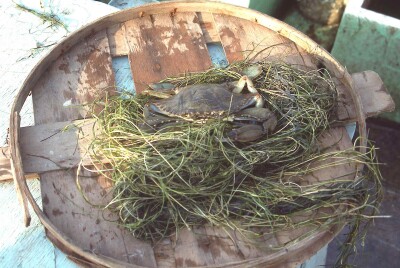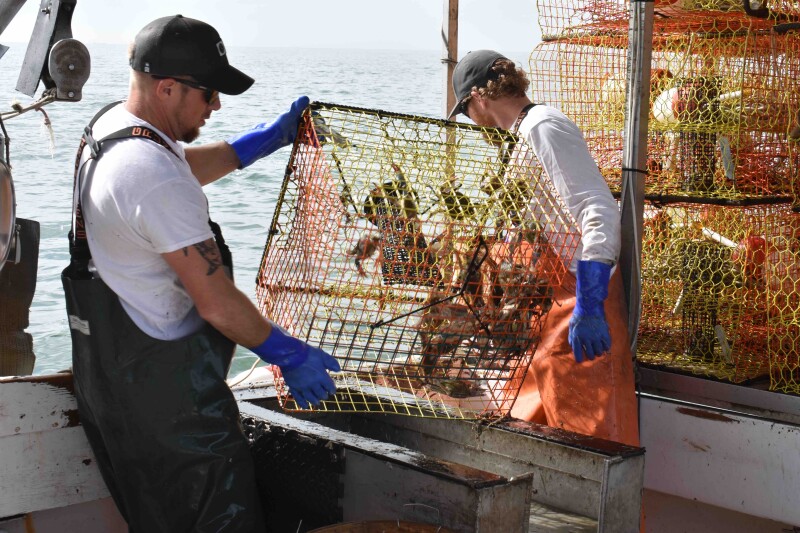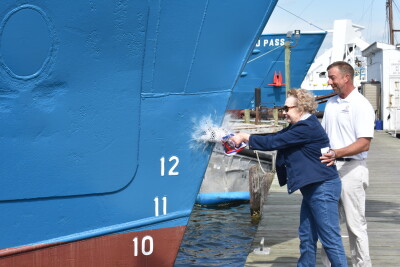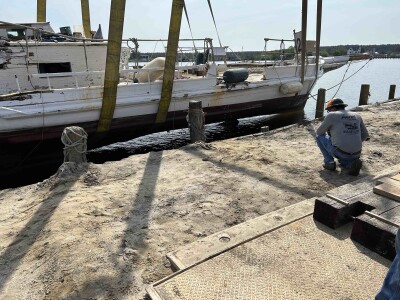The annual winter Chesapeake Bay crab dredge survey shows an estimated 96 million increase in the blue crab population – from 227 million in 2022 to 323 million blue crabs in the Bay in 2023.
The results are from the recently released 2023 Winter Crab Dredge Survey, which has Virginia Marine Resources Commission (VMRC) officials and others encouraged.
The good news comes on the heels of a horrid 2022 survey that showed the worst (227 million) estimated population numbers in the 34 years that the survey has been conducted. The last all-time high of 852 million crabs was reported in 1993.
The low survey numbers last year led VMRC and Maryland’s Department of Natural Resources (DNR) to place restrictions on crabbers – cutting down the days they can work and on catch limits.
Early signs of population improvement are being reported this spring from crabbers who work using 450-crab pot licenses in the bay. They are regularly reporting that they are catching the 27-bushel daily limit. It is a reduced limit that was imposed last year.
Cape Charles, Va., crabber Kenny Heath caught his limit on April 14 in a little over a half-day fishing 250 pots in the Chesapeake Bay. “We have been catching our limit regularly, and we are encouraged by the number of crabs we are seeing at the start of the season,” he says.

There has been some concern, however, on Virginia’s western shore as to the slow start of the peeler and soft-shell crab fishery, but most crabbers feel that this is the result of the cooler weather this spring. Lee Walton of Urbanna, Va., says, “We have had a cooler than normal spring, and the inconsistency in weather has led to inconsistency in crabs.”
The dredge survey
The winter dredge survey is conducted annually by the Virginia Institute of Marine Science and DNR. Since 1990, the survey has utilized traditional crab dredges to sample blue crabs at 1,500 sites throughout the Chesapeake Bay from December through March. By sampling during winter when blue crabs are sedentary and buried in the mud, scientists can develop more precise estimates of the number of crabs in the Bay.
The report is cautious in that it states that although the spawning stock has returned to healthy levels, fisheries managers remain cautious about the continued trend of low juvenile abundance.
The juvenile populations from 2021 through 2023 rank amongst the six lowest in the 34 years of the Winter Dredge Survey. The 2023 adult female abundance of 152 million crabs, however, is promising, though it remains below the target abundance of 196 million crabs.
“We're pleased to see over a 50 percent increase in the adult female numbers in 2023,” said Jamie Green, Commissioner of VMRC. “These results are encouraging, and we’ll continue working diligently with our partners in the Chesapeake Bay to increase blue crab stock numbers.”
The survey shows that all categories of blue crabs, by sex and by age, have shown an increase since the 2022 survey, including the abundance estimate for all crabs in Chesapeake Bay. Adult crabs drove this increase, with adult males nearly doubling and adult females returning to above-average levels.
According to current biological reference points, female blue crabs in the Chesapeake Bay are not overfished, and overfishing is not occurring due to successful management of the bay-wide blue crab fisheries, the report states.
Scientists and managers agree that a robust abundance of adult female crabs is integral to the success of the crab population, as each female can spawn, on average, up to nine million eggs per year. Adult females observed in each Winter Dredge Survey are likely to spawn during the following early- to mid-summer period, contributing to next year’s juvenile population.
New data
The low abundances seen in 2022 spurred interest in a new benchmark stock assessment for blue crabs, allowing researchers to incorporate new data and test new models since the last assessment was conducted in 2011.
This process began in September 2022 with a blue crab science workshop that sought to characterize impacts on the blue crab population from a variety of influences, including water quality, predator abundance, and availability of habitat.
The benchmark stock assessment is scheduled to be completed and peer-reviewed in 2025. Managers look forward to this new assessment to evaluate the current stock status and guide future sustainability efforts, it states.
The VMRC’s Crab Management Advisory Committee will hold a public meeting on May 24th at 4 p.m. at the VMRC Main Office to discuss the Winter Dredge Survey results and any potential management responses for the ongoing crabbing season. Visit MRC.Virginia.Gov for more information about these public meetings.







